The building at numbers 21 and 25 High Street Dunbar looks uninteresting unless you head round the back or delve into old photo and postcard archives. The tenement conceals its history well, for it is in fact late 18th century and merited a C-listing back in 1971.
C listed buildings are described as “representative of a period” and often give context to a neighbourhood or group of buildings, listed or otherwise. This is what the original listing has to say.
Late 18th century. Row of 2-storey, 6-bay form. Pend in 3rd bay from N with shop front alterations flanking. Rendered; slate roof, plain copings and gable stacks. 4-pane glazing pattern, symmetrical fenestration. NO. 25: simple early 20th century pilastered shop front with pestle and mortar trade sign.
From the HES website – date listed: 05/02/1971
By dint of being on a national list, even a C listed building is of national interest, so what do we know about it? A quick look see shows that a building appears at this site, with a very similar footprint, on Wood’s 1830 map of Dunbar, which judging by the layout is probably the same building we see today. There were already substantial outbuildings to the rear, not entirely dissimilar to the arrangement today (the red pan-tiled pharmacy store may well date back to that time, the convenience store extension is a later addition). The proprietor at that time is a Mr Sampson, who owns the whole strip down to Church Street, including Bamburgh Castle. Mr Sampson and his heirs own it at least until the 1870s according to a valuation roll entry for that year.

Some residents may remember that number 21 was the location of a once popular local department store and photography studio, Louis H Allen. From the seventies it has been a convenience store, first the Rasul brothers ran it, then the local co-oper-ative, then absorbed into the Co-operative group behemoth, as it expanded its interests into the lucrative “convenience market”.
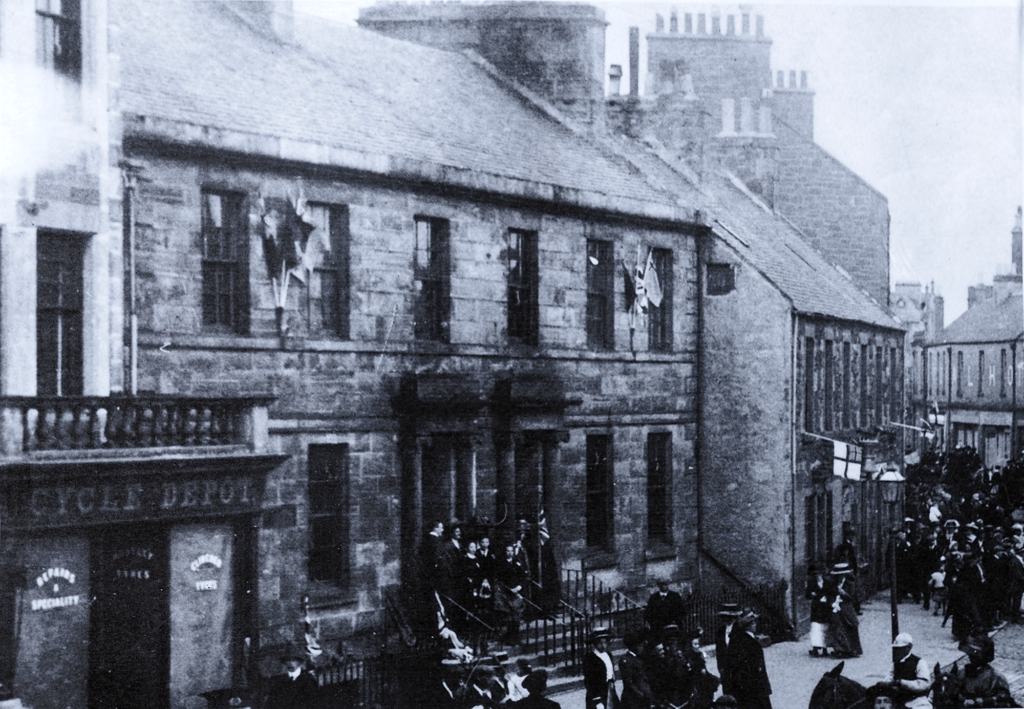
At number 25 today there is a pharmacy, Lloyds. As one might expect, it looks like there was a pharmacy at number 25 as far back as 1870 and quite possibly before that too, with a Mr James Aichison tenant and a pharmacist recorded there. There is a pend under the 3rd window bay, which forms the entrance to the flatted property above and to Bamburgh Castle. This close originally connected the High Street directly to Church Street. The public way went under an arch through and under Bamburgh Castle itself. The public way has been blocked since Bamburgh Castle was remodelled in the 1980s as 2 private homes; the entrance to the public way moved to number 19, today known as “Old Kirk’s Close”.
This close has a colourful history and I quote from a pamphlet draft I received by email a few years back:
Bamburgh Close was known to generations of schoolchildren … as the Ghostie Close as it was reputedly haunted by the spirit of a piper who attempted to discover a supposed underground passage between the close and Dunbar Castle and was eaten alive by rats.
James Miller (The History of Dunbar: From the Earliest Records to the Present Time, 1859), records the death of said piper as “suffocation by pestilential vapour”.
As well as a private entrance to the Castle the close accommodates a substantial waste storage area for the convenience store operation at number 21. All obvious signs of the underground passage, which, if it existed at all was probably connected to the old town wall, are masked by recent changes. Rodent detection monitors however remain, lest the rats return.
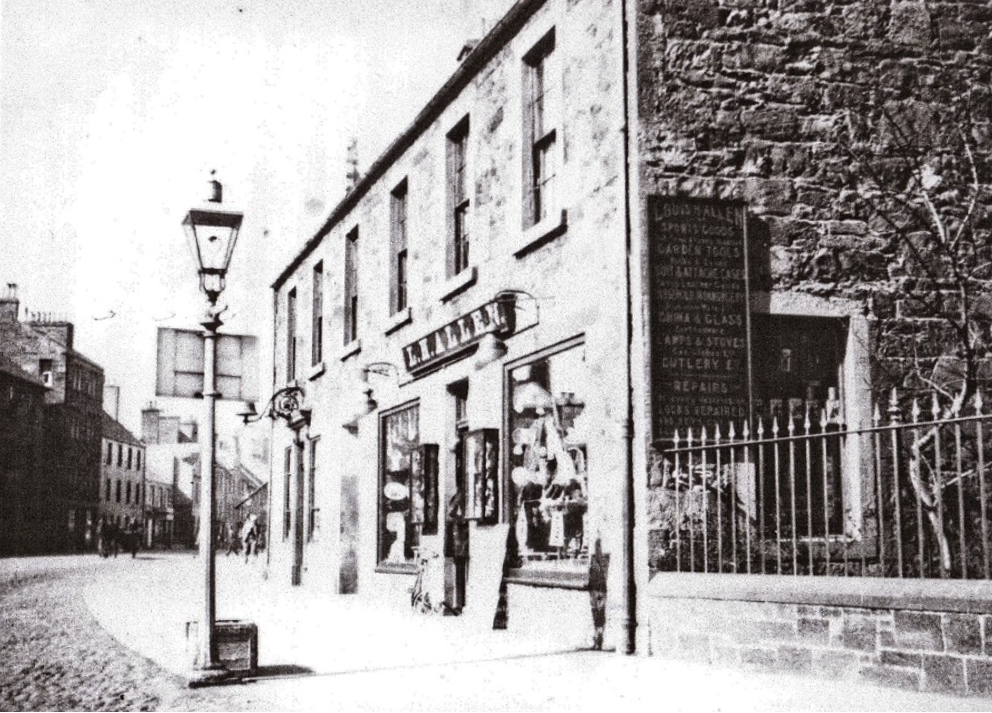
The classic advertising board much admired by modern designers is geared towards passing trade on foot.
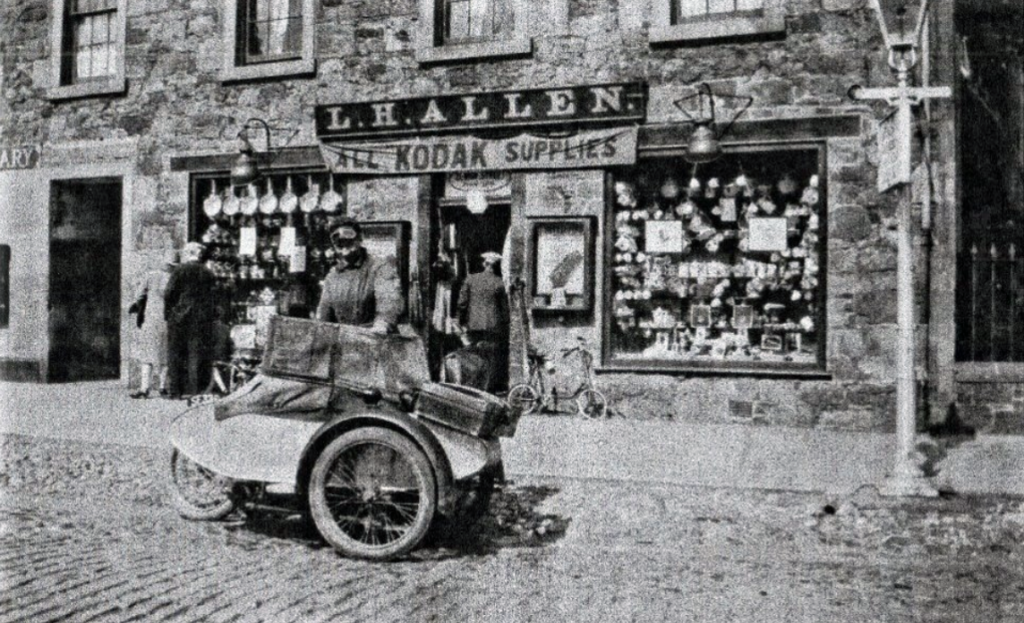
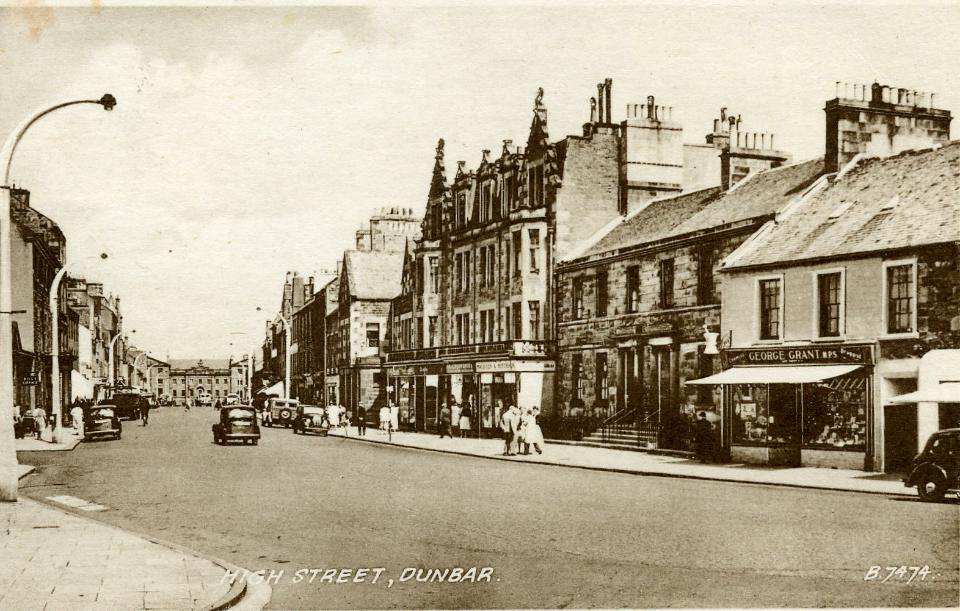
Today there is social housing at number 19 and before that Stark’s Garage. But for the previous 100 years, this was the high street entrance to the substantial “free” church that loomed large over the backlands, the Ebeneezer Erskine Memorial Church (marked as 1st United Secession Meeting House on Wood’s map). Did John Muir’s father attend? The hulk of the free church can be seen in all the old oblique aerial views from Dunbar Parish Church tower, until it was demolished in the late 20thC.


Today the rubble stonework at numbers 21 and 25 is concealed by cement render. Unlike other buildings in Dunbar that were “improved” with a faux stone facing, which homogenised the look and feel of the High Street, this one escaped “improvement” until the late 20thC. The clumsy detailing of the render intimates breeze-block construction, or a finish you might find on a utility or farm building.
Although the Louis H Allen shop front is clearly a modern early 20thC addition, it was arguably a considered change to the building. Parts of the surround survived well into the 1980s, but the central doorway is eventually lost under the stewardship of Rasul Bros. The Co-op then make a hash of restoring it to an imaginary 18th C glory, by panelling on top of the 1920s design. The shop frontage of 21 is today a crass mess with unnecessary 24/7 illumination.





The thin slate roof appears to be have been replaced not long before 2008. Since 1971, the roof space looks to have been redeveloped with the addition of 4 dormers that struggle to chime with 6 bay window pattern below. The 4-pane glazing pattern was present by the time of listing the 1970s. The definition of the fenestration was lost when the building was repainted some time after 2008.
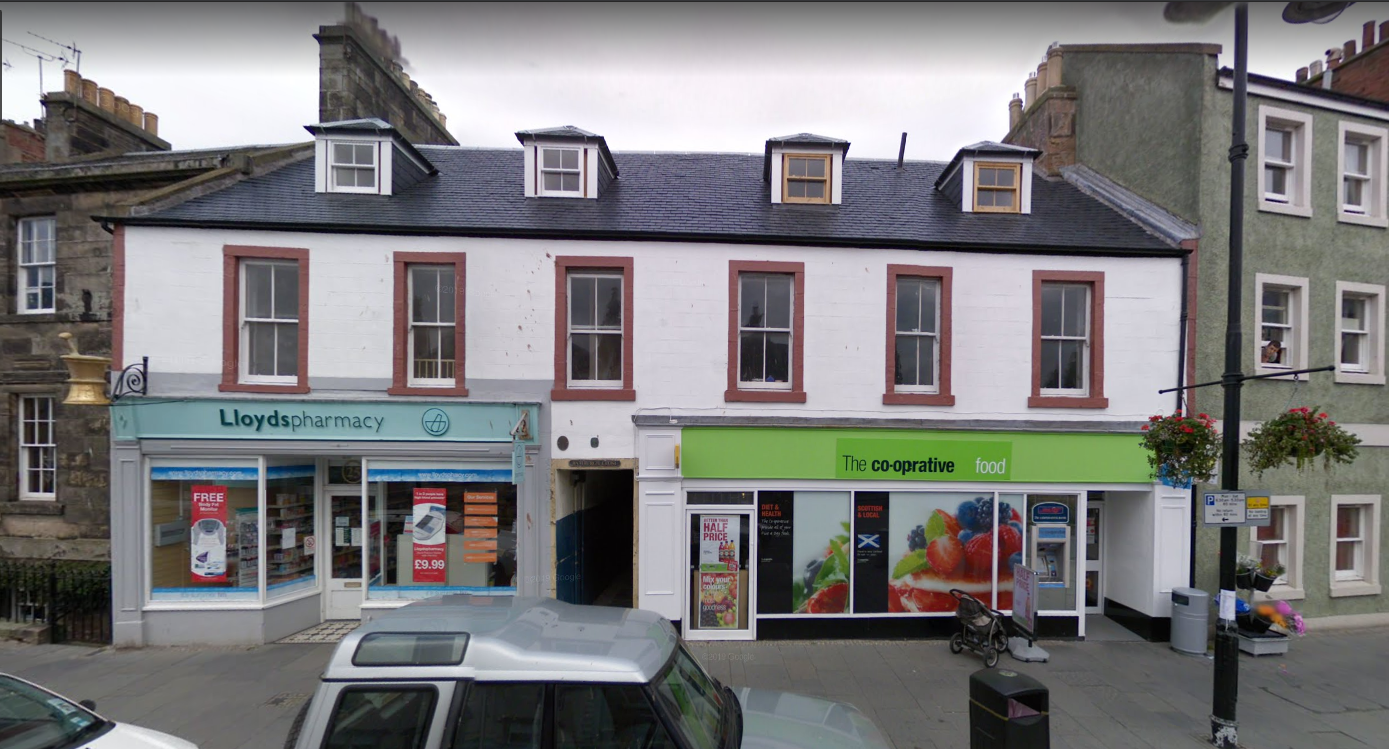

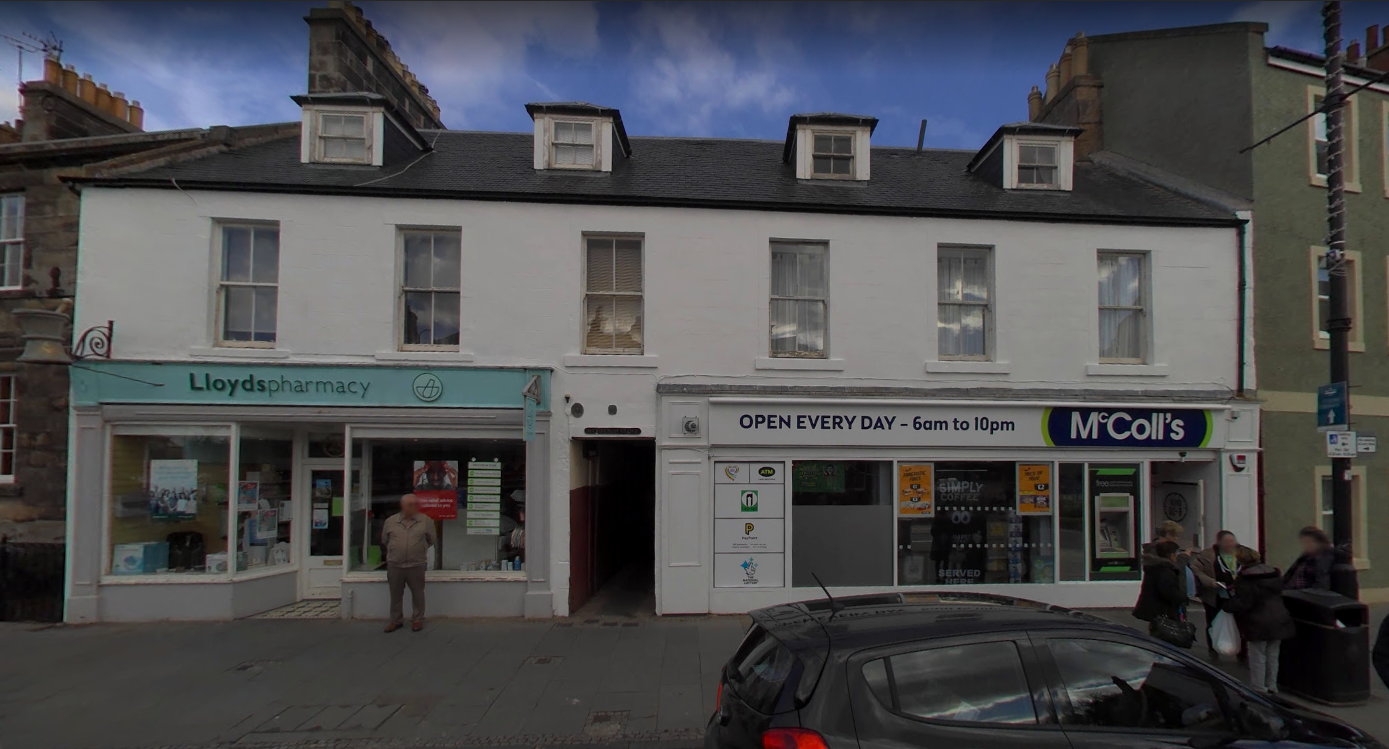
Fast forward to 2017, retrospective permission is sought for repainting the shop front in brilliant white, with 24/7 illumination, CCTV, ATM and large adverts. Some might say this is the final nail in the coffin. Vulgar and brash the changes are hardly sympathetic and seem to have gone ahead without even a passing reference to the objectives of the Conservation Area management plan.
You must be logged in to post a comment.